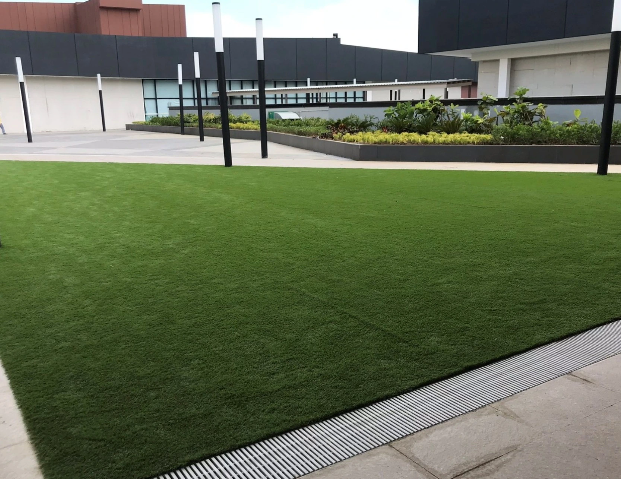Discover how Kinesio Taping is revolutionizing the world of physical therapy and sports medicine. This innovative taping method is not just about providing support to muscles and joints—it plays a crucial role in alleviating pain, increasing lymph drainage, and boosting blood flow. Whether you’re an athlete looking to improve performance or someone recovering from an injury, understanding the science behind Kinesio Taping can empower you to make informed decisions about your treatment options.
What is Kinesio Taping?
Kinesio Taping is a therapeutic taping technique developed to support and stabilize muscles and joints without restricting the range of motion. Unlike traditional taping methods that primarily focus on immobilization, Kinesio Taping is designed to facilitate the body’s natural healing process. It is applied in a manner that avoids compression of the underlying structures, thereby enhancing blood flow and lymphatic drainage.
The technique originated from the need to create a supportive environment that not only restricts harmful movements but also encourages proper muscle function. This method has gained popularity across a wide range of applications, from sports injuries to chronic pain management.
How Does Kinesio Taping Work?
The underlying mechanism of Kinesio Taping is multifaceted, targeting several aspects of the body’s recovery process:
Alleviating Abnormal Muscle Function: The tape is strategically placed over muscles and joints to help correct improper muscle firing patterns. By doing so, it assists in reducing the strain on affected muscles, which in turn promotes balanced and efficient muscle use.
Enhancing Lymph Drainage and Blood Flow: One of the unique benefits of Kinesio Taping is its ability to lift the skin microscopically. This subtle lifting action relieves pressure on the underlying lymph and blood vessels. As a result, the flow of lymph and blood is enhanced, which is crucial for reducing inflammation and accelerating the healing process.
Relieving Pressure on Nerves and Vessels: By alleviating the pressure that affects nerves and vessels, Kinesio Taping can reduce pain and promote quicker recovery. This is particularly beneficial for individuals suffering from chronic pain conditions or those recovering from an injury where nerve compression is an issue.
These mechanisms not only contribute to immediate pain relief but also facilitate long-term recovery and improved functionality.
Benefits of Kinesio Taping
The advantages of Kinesio Taping extend far beyond the traditional approach to joint stabilization. Here are some of the key benefits:
Pain Reduction: The application of Kinesio Tape has been shown to reduce pain by alleviating the stress placed on injured or overused muscles. By decreasing the pressure on nerves, the tape helps to interrupt pain signals before they become overwhelming, providing a natural form of pain management.
Improved Mobility: Unlike traditional taping methods that might restrict movement, Kinesio Taping supports muscles and joints while preserving a full range of motion. This is crucial for athletes and active individuals who need to maintain performance levels without compromising recovery.
Enhanced Recovery: Kinesio Taping plays a significant role in reducing inflammation by promoting better circulation and lymphatic drainage. With improved blood flow, the affected areas receive more oxygen and nutrients, accelerating the healing process and enabling a quicker return to normal activities.
Support for Abnormal Muscle Function: By addressing and correcting abnormal muscle function, Kinesio Taping contributes to a balanced musculoskeletal system. This support not only helps in injury prevention but also in maintaining overall muscle health during the recovery process.
Application Process: How is Kinesio Taping Applied?
Proper application of Kinesio Taping is essential to harnessing its full benefits. The technique is most effectively administered by professionals trained in physical therapy. Here’s a brief overview of how the process works:
Assessment by a Trained Professional: A qualified Doctor of Physical Therapy or certified specialist evaluates the patient’s condition. This assessment determines the areas of muscle imbalance, pain, or restricted movement that require attention.
Customized Application: Based on the assessment, the tape is applied in specific patterns and directions. The aim is to support the natural movement of the muscles without causing undue compression. This tailored approach ensures that the tape not only supports but also enhances the body’s healing mechanisms.
Integration with Other Therapies: Often, Kinesio Taping is used alongside other treatments such as exercise therapy, manual therapy, or other modalities. This integrated approach maximizes the potential for recovery and helps maintain muscle function.
Because of the precision required in its application, it is critical to have a trained professional handle the taping process to ensure safety and effectiveness.
Who Can Benefit from Kinesio Taping?
Kinesio Taping is a versatile technique that benefits a diverse range of individuals, including:
Athletes: Whether you’re a professional athlete or a weekend warrior, the tape can help prevent injuries, support muscle function during activity, and speed up recovery after strenuous exercise.
Individuals with Sports Injuries: For those recovering from sprains, strains, or other sports-related injuries, Kinesio Taping can provide the necessary support to facilitate healing while maintaining mobility.
Chronic Pain Sufferers: People dealing with chronic conditions such as tendonitis or arthritis often find relief with Kinesio Taping, as it helps reduce pain and inflammation without restricting movement.
Post-Surgical Patients: After surgery, maintaining proper muscle function is critical. The tape supports recovery by reducing swelling and promoting blood flow, thereby speeding up the rehabilitation process.
Through its comprehensive approach to support and healing, Kinesio Taping has become an essential tool in both preventive care and recovery.
Scientific Evidence and Research
A growing body of scientific research supports the effectiveness of Kinesio Taping. Clinical studies have demonstrated that properly applied Kinesio Tape can lead to significant improvements in pain reduction, range of motion, and overall muscle function. These studies indicate that when used correctly, Kinesio Taping can enhance blood and lymphatic flow, which are critical factors in reducing inflammation and promoting tissue repair.
Patient testimonials further underscore the benefits of this technique. Many individuals report noticeable improvements in their recovery times and a reduction in discomfort during physical activities. These real-life accounts, combined with scientific data, form a compelling case for the integration of Kinesio Taping into standard therapeutic practices.
Choosing the Right Practitioner
The success of Kinesio Taping largely depends on the expertise of the practitioner applying it. When selecting a professional, consider the following tips:
Check Credentials: Ensure that the practitioner is certified and has received proper training in Kinesio Taping techniques. Credentials from reputable physical therapy institutions or professional organizations can serve as a reliable indicator of expertise.
Experience Matters: Look for a specialist who has extensive experience in using Kinesio Taping, particularly if you have specific issues such as sports injuries or chronic pain conditions.
Consultations and Reviews: Schedule a consultation to discuss your needs and ask about their approach to Kinesio Taping. Reading reviews or testimonials from previous patients can also provide valuable insights into the practitioner’s effectiveness and bedside manner.
By taking the time to select a qualified professional, you ensure that you receive the full benefits of this innovative therapeutic technique.
Takeaway
Kinesio Taping represents a significant advancement in the field of physical therapy, offering a unique blend of support, pain relief, and enhanced recovery. By understanding how this method works—from its ability to improve lymphatic drainage and blood flow to its role in correcting abnormal muscle function—patients can appreciate the comprehensive benefits it provides.
Whether you’re recovering from an injury, managing chronic pain, or striving to optimize athletic performance, Kinesio Taping offers a versatile solution that goes beyond traditional methods. With the proper application by a trained professional, this innovative approach can be a valuable part of your treatment plan, helping you achieve a full range of motion, reduced inflammation, and improved overall muscle health.
If you’re curious about how Kinesio Taping can help you, consider scheduling a consultation with a certified physical therapist. Embrace a treatment that not only addresses pain and inflammation but also supports your body’s natural healing process. Let Kinesio Taping be the bridge between injury and recovery, empowering you to lead a more active, pain-free life.






